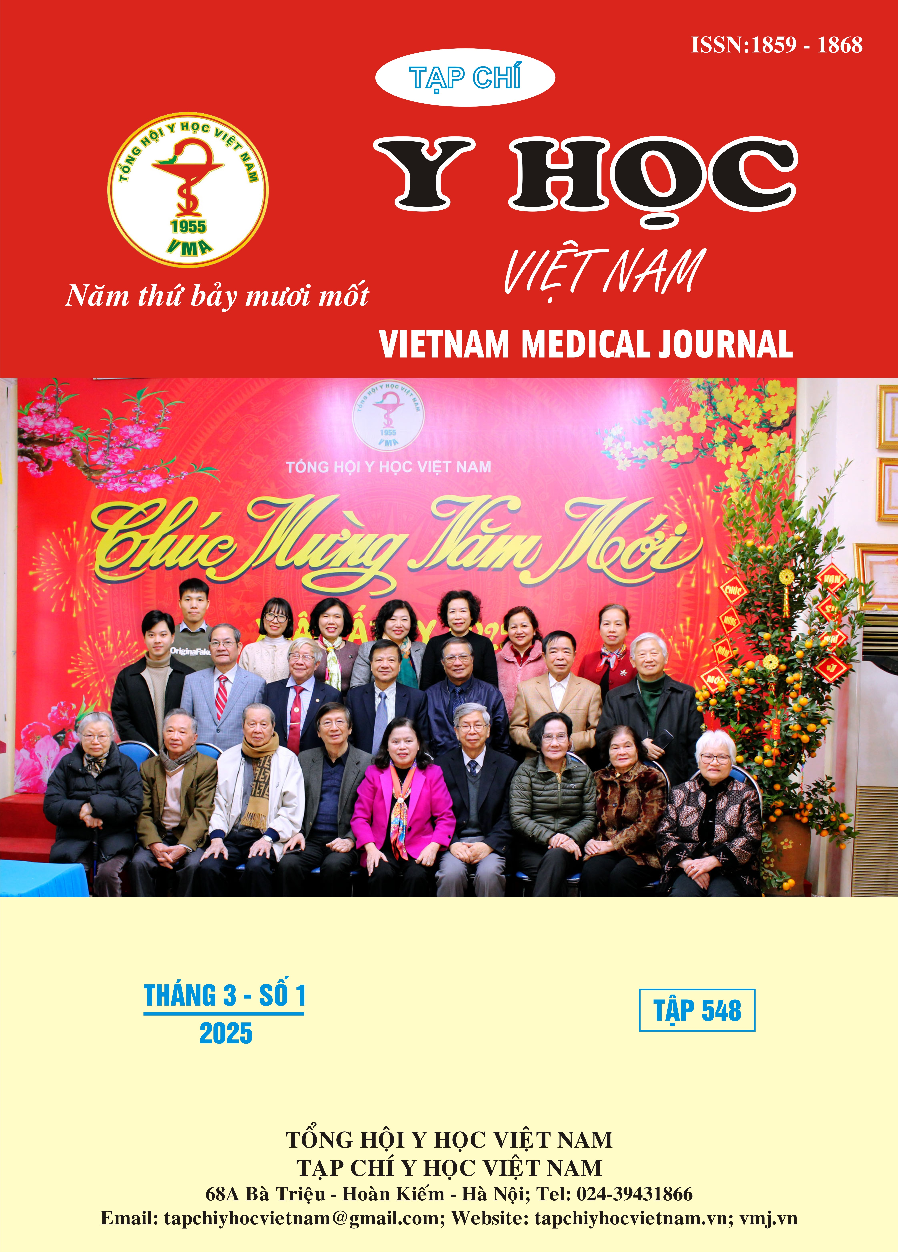CLINICAL CHARACTERISTICS, RADIOGRAPHIC AND COMPUTED TOMOGRAPHY IMAGING OF LE FORT II MAXILLARY FRACTURES IN PATIENTS UNDERGOING SURGICAL
Main Article Content
Abstract
Introduction: The clinical and paraclinical symptoms of Le Fort II maxillary fractures are quite diverse and play a crucial role in guiding surgical treatment. Objectives: To describe the clinical features, radiographic (X-ray) images, and computed tomography (CT) scans of patients with Le Fort II maxillary fractures. Materials and Methods: A cross-sectional descriptive study was conducted on 35 Le Fort II maxillary fracture patients who underwent surgical treatment at Can Tho Central General Hospital from June 2023 to December 2024. Results: The average age of the patients was 32.4±13.21 years, with the majority in the 19-39 age group (65.7%) and predominantly male (82.9%). All patients (100%) presented with bone discontinuity or step defects, tenderness at specific pressure points, and abnormal mobility of the maxilla. Clinical symptoms included facial deformity (82.9%), restricted mouth opening (82.9%), and malocclusion (94.3%). X-ray and CT scans (including 3D reconstruction) revealed that the fracture line predominantly passed through the zygomaticomaxillary suture with corresponding rates of 94.2% and 94.3% on the right side and 91.2% and 94.3% on the left side. Conclusion: Le Fort II maxillary fractures primarily occur in males aged 19-39. Clinical, X-ray, and CT image findings are diverse, with fracture lines most commonly passing through the zygomaticomaxillary suture in over 91.2% of cases.
Article Details
Keywords
Le Fort II fracture, maxillary fracture
References
2. Dargani Michel Fabien et al, “Epidemiology and management of Lefort fractures at the Sylvanus olympio University Hospital of Lomé (Togo)”, Advances in Oral and Maxillofacial Surgery. 2022.8. https://doi.org/10.1016/j.adoms. 2022.100376.
3. Assiri Z.A. et al, “Retrospective radiological evaluation to study the prevalence and pattern of maxillofacial fracture among Military personal at Prince Sultan Military Medical City [PSMMC], Riyadh: An institutional study”,Saudi Dental Journal. 2020. 32(5):242-249. https://doi.org/ 10.1016/j.sdentj.2019.09.005
4. Nguyễn Hồng Lợi, Hoàng Lê Trọng Châu, “Kết quả điều trị gãy Le Fort II xương hàm trên bằng nẹp vít: hồi cứu 102 bệnh nhân tại Bệnh viện Trung ương Huế”, Tạp chí Y học lâm sàng Bệnh viện Trung ương Huế. 2022. 76:117-123.
5. T. B. Fernandes et al, “A rereospective epidemiological review of maxillofacila trauma in a tertiary care centre in Goa, India”, Chinese Journal of Traumatology.2024. 27(5):263-271.
6. Hossein Daneste, Pourya Bayat, “The prevalence of maxillary fractures in trauma patients referred to Shahid Rajaei hospital in Shiraz from 2011 to 2021”, Journal of Craniomaxillofacial Research 2022. 9(2): 81-85.http://dx.doi.org/10.18502/jcr.v9i2.11738
7. Nguyễn Văn Đông, Phạm Hoàng Tuấn, “Đặc điểm lâm sàng, X quang gãy xương hàm trên tại Bệnh viện Răng hàm mặt Trung ương Hà Nội”, Tạp chí Y học Việt Nam. 2022. 520(1A):14-17.
8. Trần Tấn Tài, Đặng Văn Trí, Hoàng Lê Trọng Châu, “Khảo sát đặc điểm lâm sàng, x quang và kết quả điều trị phẫu thuật gãy xương hàm trên”, Tạp chí Y Dược học-Trường Đại học Y dược Huế 2021.11(04): 87-94. https://www.doi.org/10. 34071/jmp.2021.4.13


